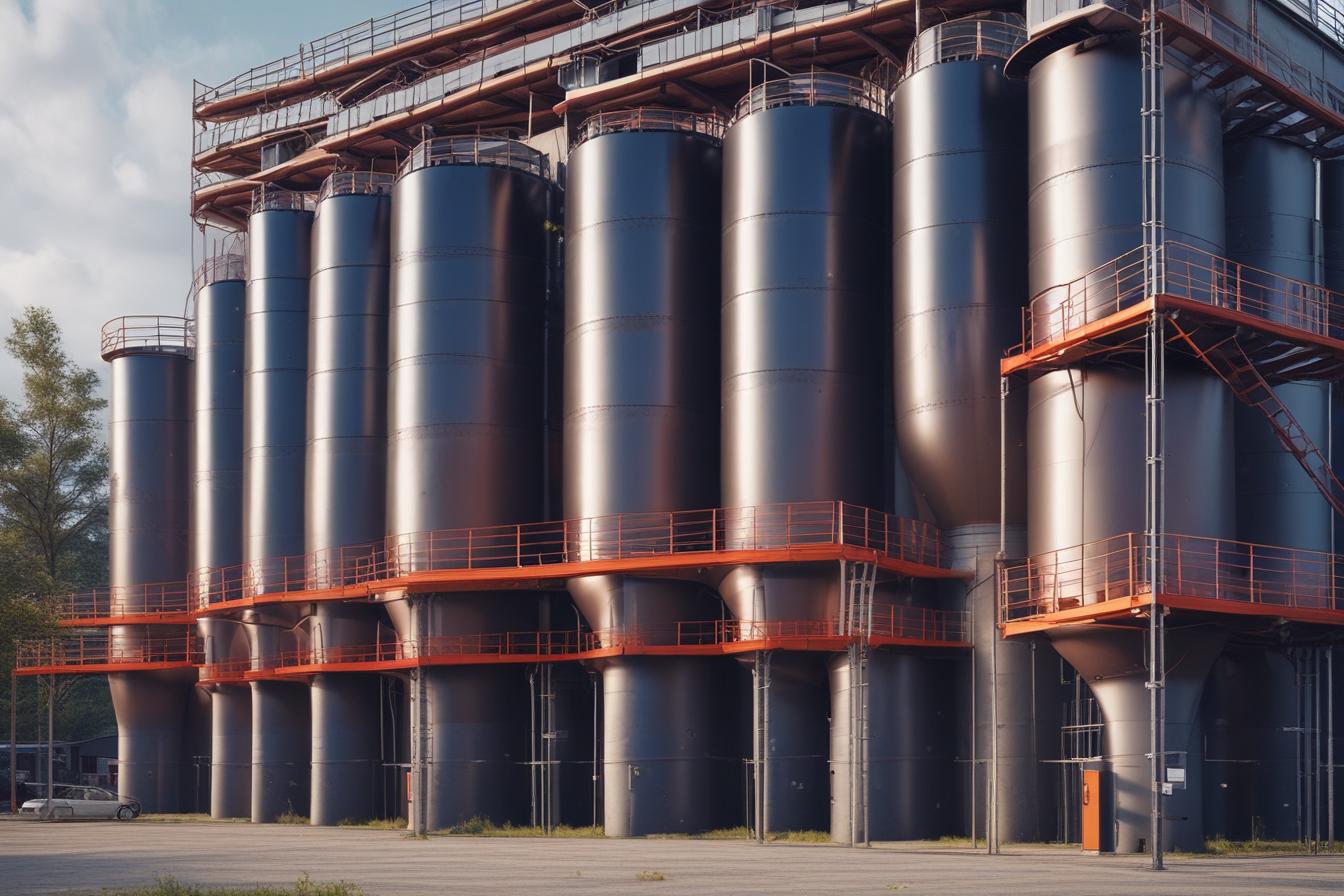What is Content Siloing for SEO?
If you’re looking to improve your website’s search engine rankings and overall SEO performance, content siloing is a strategy you can’t afford to ignore. By strategically organizing and linking your content into tightly-focused topic clusters or « silos, » you can enhance your website’s topical authority and make it easier for search engines to crawl and understand your content.
Content Siloing Defined
Content siloing involves grouping related content pieces around a core topic or theme. This method creates a well-structured website architecture where individual pieces of content are organized in a logical, hierarchical way, with each content silo covering a specific subtopic or keyword cluster.
Why Content Siloing Matters for SEO
Search engines like Google aim to provide the most relevant and authoritative results for users’ queries. By implementing content silos, you can demonstrate your website’s topical expertise and relevance, leading to better search visibility and higher rankings. Here’s why content siloing is crucial for SEO:
- It improves website architecture and organization, making it easier for search engines to crawl and index your content.
- It establishes your website as an authority on specific topics or keywords, boosting your chances of ranking for those terms.
- It enhances user experience by providing a logical structure and making it easier for visitors to find related content.
- It facilitates internal linking, which can distribute PageRank and authority more effectively throughout your website.

Why Content Silos are Crucial for SEO
In today’s highly competitive digital landscape, implementing a content silo strategy is essential for SEO success. Here are some compelling reasons why content silos are crucial:
Improved Topical Authority and Relevance
By grouping related content into well-defined silos, you can demonstrate your website’s expertise and authority on specific topics. This topical focus helps search engines understand the relevance of your content, making it more likely to rank higher for relevant queries.
Enhanced User Experience
Content silos create a more organized and intuitive user experience by logically grouping related information together. This not only improves the overall usability of your website but also reduces bounce rates and increases engagement metrics, which are important ranking factors.
Better Internal Linking Opportunities
Siloed content naturally lends itself to more effective internal linking. By strategically linking related pieces of content within a silo, you can distribute PageRank and authority more efficiently, helping search engines understand the relationships between your content and improving overall rankings.
Increased Crawlability and Indexability
A well-structured content silo architecture makes it easier for search engine crawlers to navigate and index your website’s content. This improved crawlability and indexability can lead to better search visibility and higher rankings for your target keywords.

How to Create an Effective Content Silo Structure
Creating an effective content silo structure requires careful planning and execution. Here are the five simple steps you can follow to implement a successful content siloing strategy:
1. Identify Your Core Topics and Keywords
Start by conducting thorough keyword research to identify the core topics and keywords relevant to your business or industry. These will form the foundation of your content silos. Tools like Ahrefs, SEMrush, or Google Keyword Planner can help you uncover high-value keywords and topics to target.
2. Organize Your Content into Silos
Group your existing content, as well as plan for new content, into logical silos based on the core topics and keywords you identified. Each silo should cover a specific subtopic or keyword cluster, with a dedicated pillar page serving as the main hub for that silo.
3. Create a Hierarchical Structure
Within each content silo, establish a hierarchical structure with the pillar page at the top, followed by supporting cluster pages that delve deeper into specific aspects or subtopics. This structure helps search engines understand the relationships between your content pieces and the overall topical authority of your website.
4. Implement Strategic Internal Linking
Internal linking is crucial for content silos. Link your supporting cluster pages back to the main pillar page, and cross-link related content within the same silo. This helps distribute PageRank and authority, while also providing users with a seamless navigation experience.
5. Monitor and Optimize Your Silos
Continuously monitor the performance of your content silos, track relevant metrics (such as rankings, traffic, and engagement), and make adjustments as needed. Identify any gaps or opportunities for improvement, and update or create new content to strengthen your silos and maintain your topical authority.
By following these steps, you’ll create a well-structured, SEO-friendly website that showcases your expertise and topical relevance, ultimately leading to higher search engine rankings and increased organic traffic.

Content Silo Best Practices to Follow
Implementing content silos is not a one-size-fits-all approach. To maximize the effectiveness of your content siloing strategy, it’s essential to follow best practices tailored to your specific goals and audience. Here are some key best practices to keep in mind:
Conduct Comprehensive Keyword Research
Thorough keyword research is the foundation of an effective content silo strategy. Identify the most relevant and high-value keywords for your business, and use them to inform the structure and content of your silos. Tools like ContentScale.fr can help you generate SEO-optimized content at scale, ensuring consistent and accurate keyword usage.
Prioritize User Experience
While content silos are primarily an SEO strategy, it’s crucial to prioritize the user experience. Ensure that your content silos are intuitive, easy to navigate, and provide a logical flow of information. This not only improves engagement metrics but also aligns with search engines’ focus on user satisfaction.
Maintain Consistent Branding and Design
A cohesive branding and design approach across your content silos can enhance user trust and authority signals. Use consistent visual elements, such as color schemes, typography, and formatting, to create a seamless experience for your visitors.
Leverage Internal Linking Strategically
Internal linking is a crucial aspect of content siloing. Link your supporting cluster pages back to the main pillar page, and cross-link related content within the same silo. This helps distribute PageRank and authority, while also providing users with a seamless navigation experience.
Regularly Update and Maintain Your Silos
Content silos are not a set-it-and-forget-it strategy. Regularly update and maintain your silos by adding new content, optimizing existing pieces, and ensuring that internal links are intact and functioning correctly. This helps keep your silos fresh, relevant, and aligned with the latest search engine algorithms and user preferences.

Examples of Successful Content Silos
To better understand the power of content siloing, let’s take a look at some real-world examples of brands and websites that have successfully implemented this strategy:
HubSpot’s Inbound Marketing Silo
HubSpot, a leading marketing automation platform, has built a comprehensive content silo around the topic of inbound marketing. Their pillar page, « What is Inbound Marketing?, » serves as the central hub, with supporting cluster pages covering various aspects of inbound marketing, such as content creation, lead generation, and marketing automation.
Ahrefs’ SEO Content Silo
Ahrefs, a popular SEO tool, has created a robust content silo dedicated to SEO education and best practices. Their pillar page, « What is SEO?, » acts as the main hub, with cluster pages covering topics like keyword research, link building, technical SEO, and more. This comprehensive silo showcases Ahrefs’ expertise and authority in the SEO space.
REI’s Outdoor Gear Silos
REI, a renowned outdoor retailer, has implemented content silos around various outdoor activities and gear types. For example, their « Hiking » silo includes a pillar page with general hiking information, supported by cluster pages covering specific topics like hiking gear, trail guides, and safety tips.
These examples demonstrate the versatility and effectiveness of content siloing across various industries and niches. By organizing content into logical, hierarchical structures, these brands have established themselves as trusted authorities in their respective fields, while also providing an exceptional user experience.

Measure and Optimize Your Content Silos
Implementing a content silo strategy is an ongoing process that requires continuous monitoring, measurement, and optimization. Here are some key steps to help you evaluate and improve the performance of your content silos:
Define Key Performance Indicators (KPIs)
Establish clear KPIs that align with your content silo goals, such as organic traffic, rankings for target keywords, engagement metrics (time on page, bounce rate), and conversion rates. These KPIs will serve as benchmarks for measuring the success of your content silos.
Monitor and Analyze Performance Data
Regularly track and analyze the performance data for your content silos using tools like Google Analytics, Google Search Console, and ranking tracking software. Look for trends, patterns, and areas for improvement, and use this data to inform your optimization strategies.
Conduct Content Audits and Gap Analyses
Periodically perform content audits to identify any gaps, outdated information, or opportunities for new content within your silos. This will help you maintain the relevance and comprehensiveness of your content, ensuring that it continues to meet user needs and search engine expectations.
Optimize Content and Internal Linking
Based on your performance data and content audits, optimize your existing content by updating information, improving keyword targeting, and enhancing internal linking. Ensure that your internal links are relevant, descriptive, and spread authority effectively throughout your silos.
Leverage AI-Powered Content Generation Tools
To streamline your content optimization efforts, consider leveraging AI-powered content generation tools like ContentScale.fr. These tools can help you quickly generate SEO-optimized content at scale, ensuring consistent keyword usage and topical relevance across your content silos.
Monitor and Adapt to Algorithm Updates
Search engine algorithms are constantly evolving, so it’s essential to stay informed about updates and adjust your content silo strategy accordingly. Monitor industry news and best practices, and be prepared to make changes to your silos as needed to maintain optimal performance.
By continuously measuring, analyzing, and optimizing your content silos, you can ensure that your website remains a trusted authority in your niche, delivering a superior user experience while consistently ranking well in search engine results.

Conclusion and Primary CTA
In today’s competitive online landscape, implementing an effective content siloing strategy is essential for achieving higher search engine rankings, establishing topical authority, and delivering an exceptional user experience. By following the steps outlined in this guide, you can create a well-structured, SEO-friendly website that showcases your expertise and topical relevance.
To streamline your content siloing efforts and stay ahead of the competition, consider leveraging the power of ContentScale.fr. This AI-powered content generation tool allows you to quickly create SEO-optimized content at scale, ensuring consistent keyword usage and topical relevance across your content silos.
Take the first step towards higher rankings and increased organic traffic today. Sign up for ContentScale.fr and start implementing your content siloing strategy with ease.
